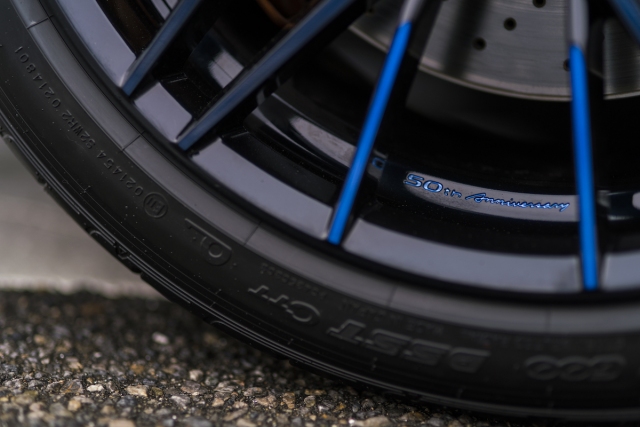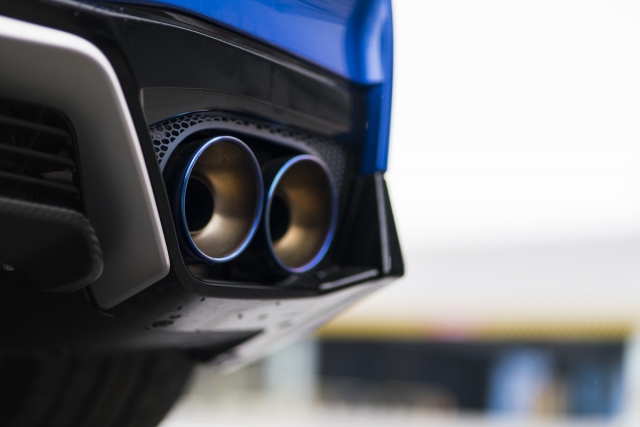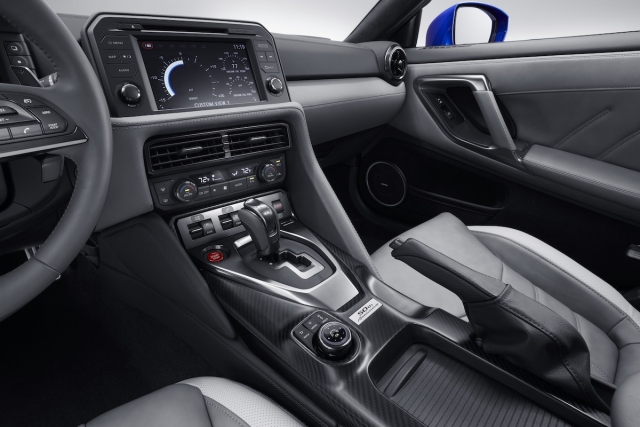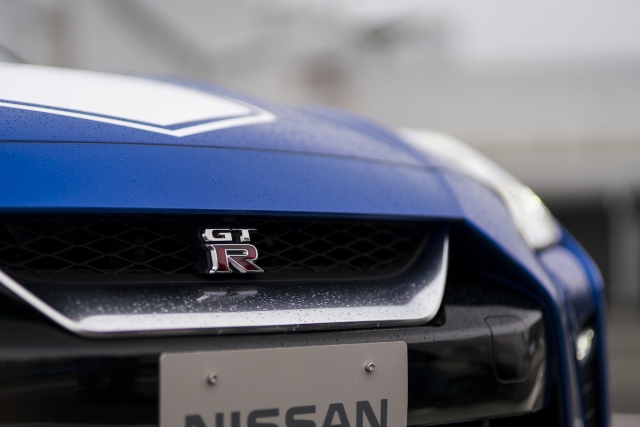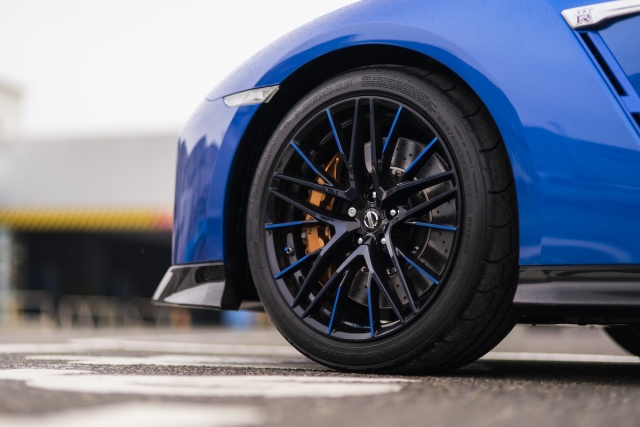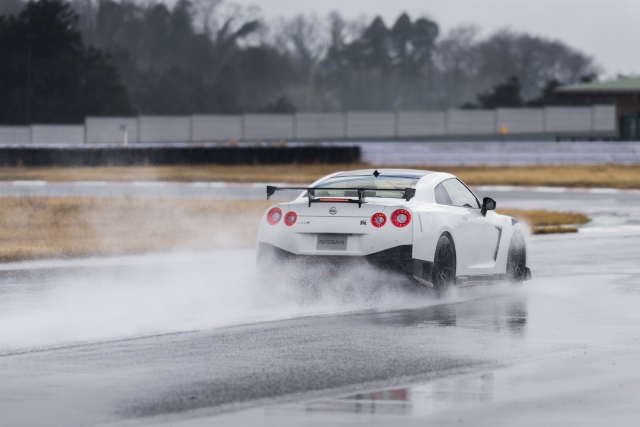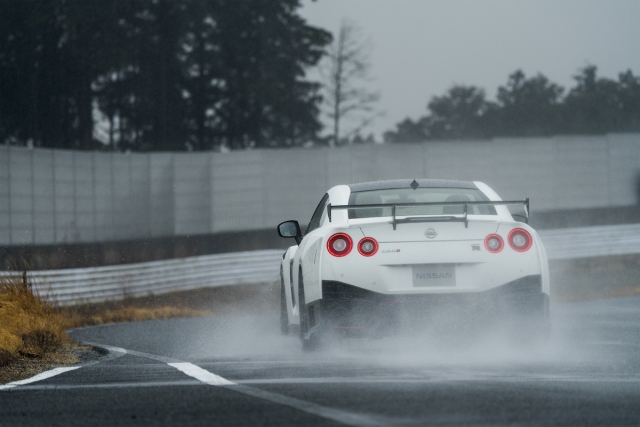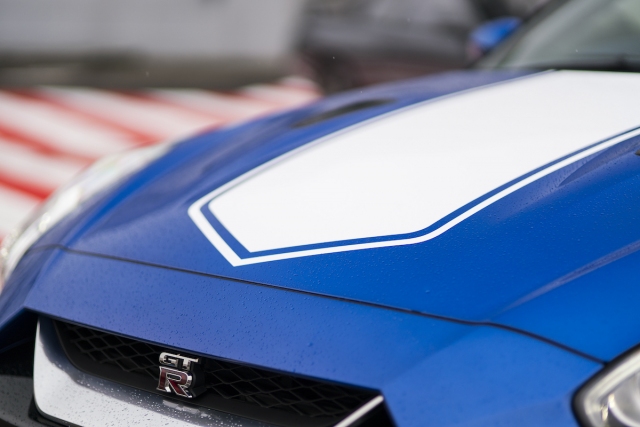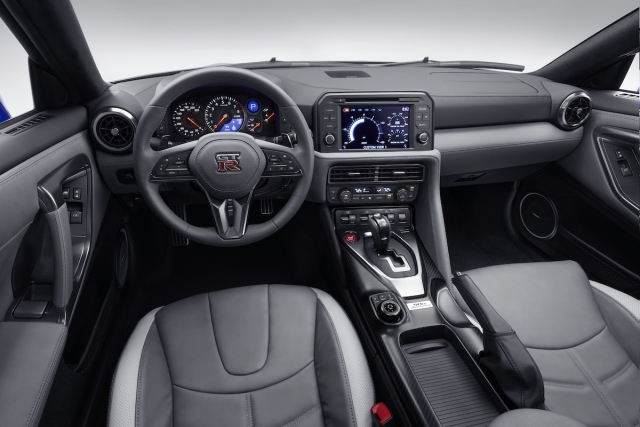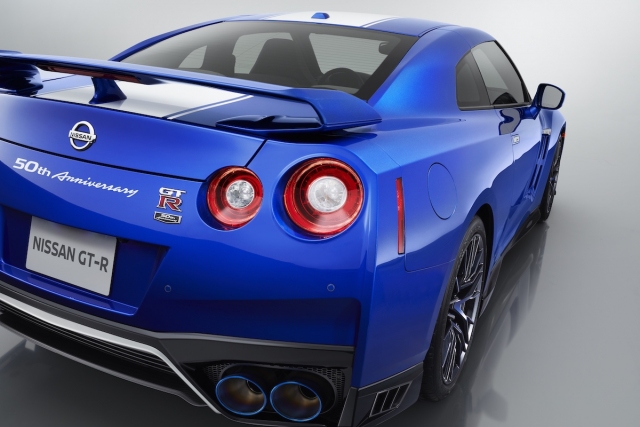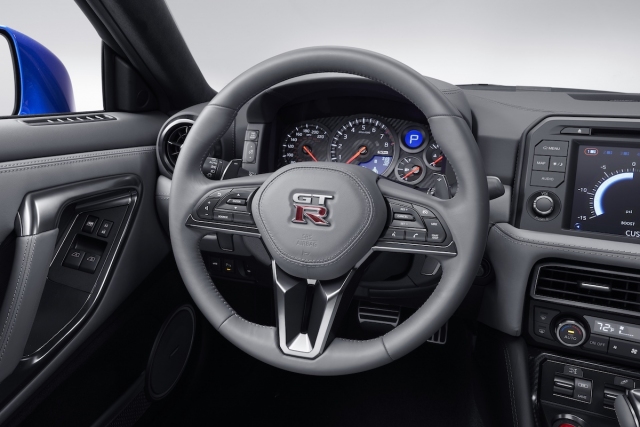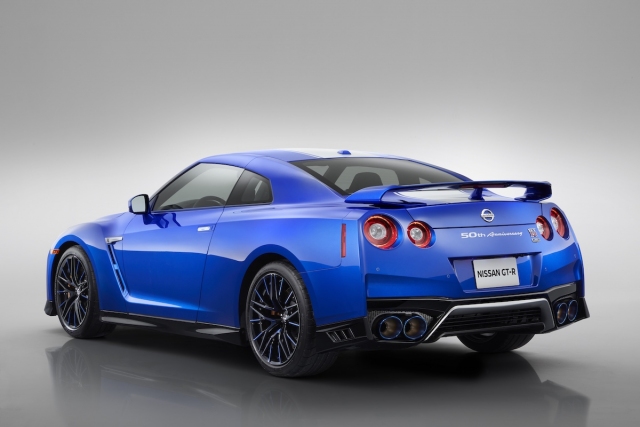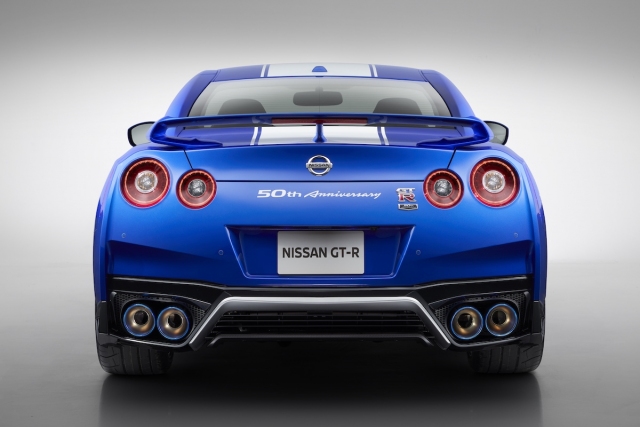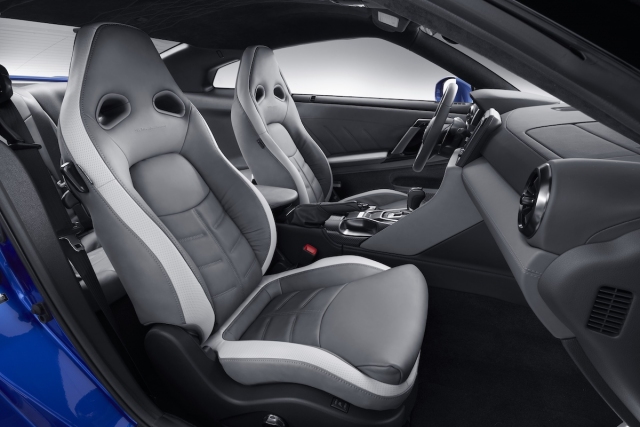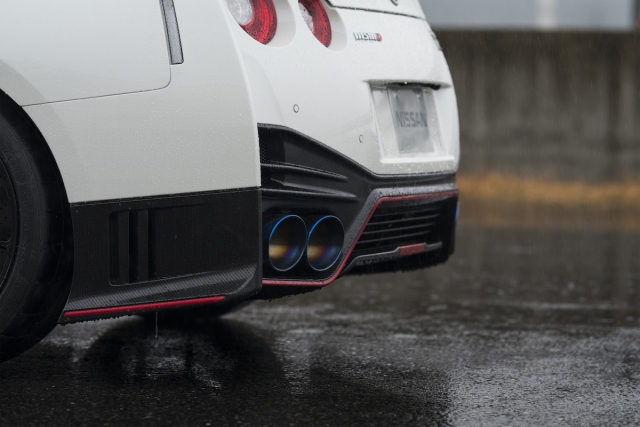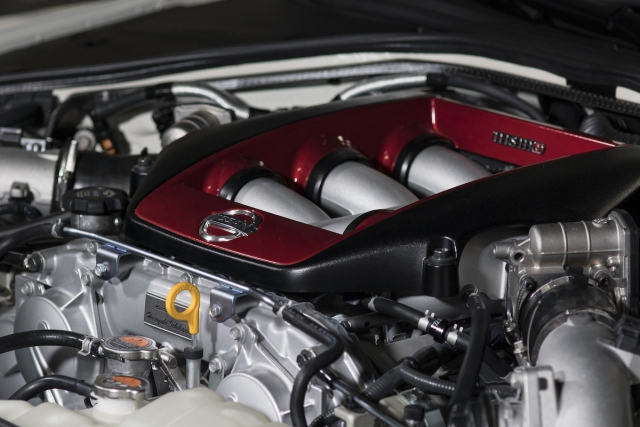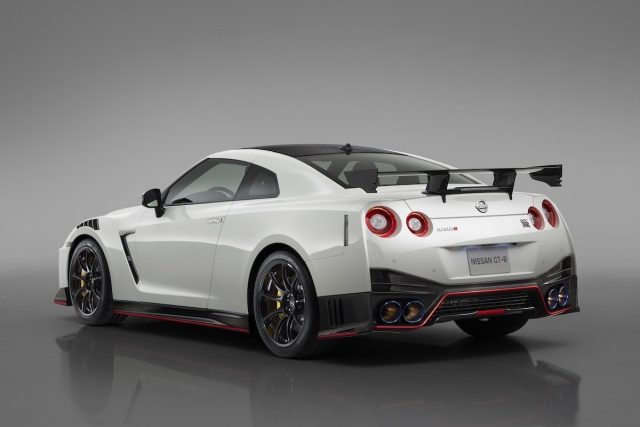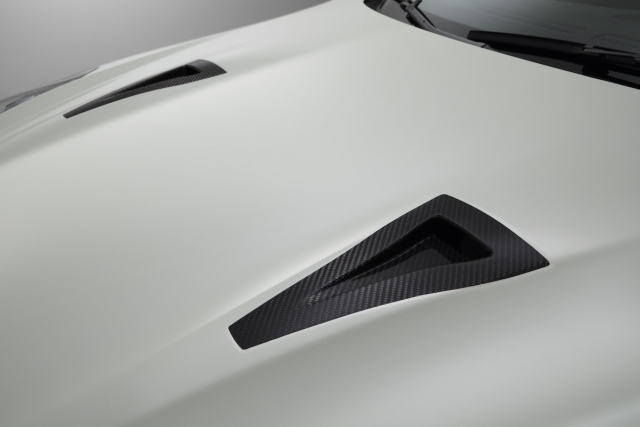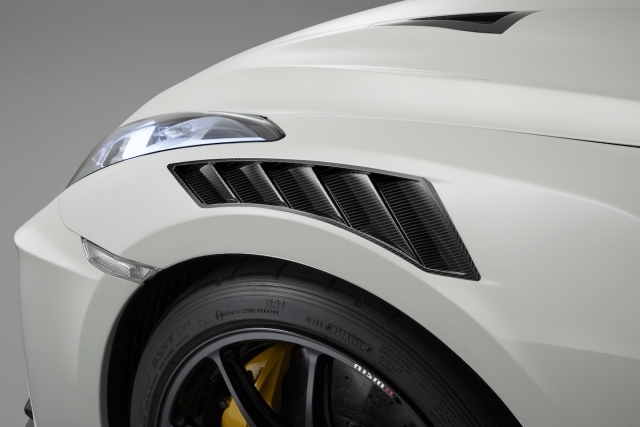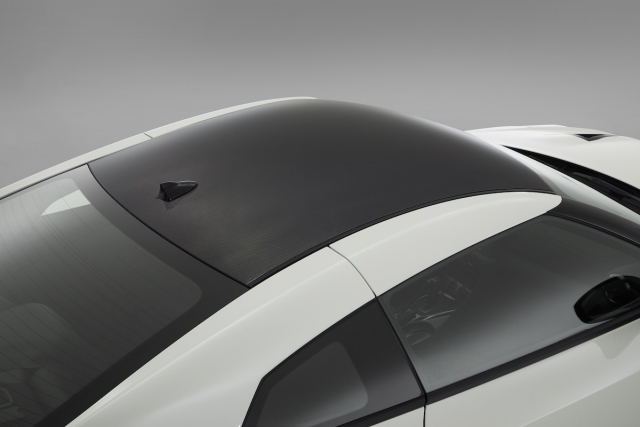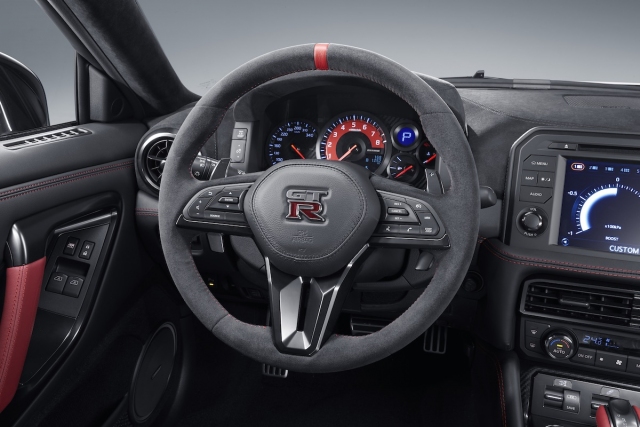2019 is a momentous year for Nissan. Not only does it mark 50 years of the iconic Z, but also 50 years of the legendary GT-R. Nissan already marked the Z’s birthday with a 370Z 50th Anniversary Edition, but now it’s Godzilla’s turn with its own motorsports-inspired 50th Anniversary Edition.
Scholars of Skyline history will instantly recognize the The Nissan GT-R 50th Anniversary Edition’s racing stripe as an homage to the 1971 livery of the KPGC10 Skyline GT-R touring cars.
Nissan will offer this graphic scheme in three heritage colors: Pearl White with red stripes, Super Silver with white stripes, and the one shown in the official press photos, Wangan Blue with white stripes.
“Retired since the GT-R R34 model, Bayside (Wangan) Blue makes a return,” says Nissan’s official press release. “A four-coat, double-heat treatment process ensures a vivid blue with striking highlights and deep shadows,” it continues.
Additional markers of the 50th Anniversary Edition include blue accents on the wheel spokes, a unique steering wheel and shift knob trim, special embossed seats, Alcantara headliner with unique stitching, Alcantara-wrapped sunvisors, special 50th Annivesary badging, and more. a new Twilight Gray interior color debuts on the 50th AE, but becomes available afriss the GT-R line.
The 2020 GT-R 50th AE is based on the Premium trim level, which includes a titanium exhaust and Bose sound system. Like the 370Z 50th, there are no powertrain changes unique to the trim. It uses the same hand-built 565-horsepower, 3.8-liter V6 24-valve twin-turbo engine as the base GT-R.
However, for 2020 a few changes have been made that, while not necessarily increasing output figures, should make the already potent supercar slayer a bit more gutsy.
Among them was incorporating new turbochargers with an abradable seal, which Nissan says allows tighter clearances and a five percent increase in efficiency, should provide a better low rpm response. For tuners, the exhaust manifolds now have optimized turbo flange attachment points, which allow the removal and replacement of turbines without affecting the manifold.
Nissan says that a retune of the electronically controlled suspension improves cornering stability and ride. It should stop better as well, thanks to a new ceramic brake kitn (standard on the NISMO) and a new booster that requires less pedal stroke before engaging the brakes.
It’s perhaps a bit unfortunate, then, that the 50th AE package isn’t offered on the GT-R Track Edition, because for 2020 that trim level gets the NISMO’s 600-horsepower mill in the US market. Nissan will also offer an optional carbon fiber roof in addition to the Track Edition’s carbon spoiler. With redesigned turbos that Nissan says are borrowed from its GT3 race car, throttle response is theoretically improved by 20 percent.
If the Track Edition now gets the 600-horse engine, then what will set apart the GT-R NISMO? For 2020, the top-spec GT-R is reworked with a new carbon fiber hood and fenders that feature scalloped vents for the dual purposes of heat extraction and downforce over the front wheels.
An additional fat-trimming diet covers a number of components — including the forged Rays 20-inchers, as well as carbon fiber front and rear fascias, roof, side sills, and trunk — reducing the NISMO’s overall curb weight by nearly 44 pounds. That’s 3,867 pounds versus the Premium’s 3,933.
New tires by Dunlop feature wider tread and fewer grooves, growing the contact patch by 11 percent. Nissan says this improves both steering response, grip, and rolling resistance. A retuned suspension and the new aerodynamics help keep the car much more stable at Autobahn speeds. GT3 race car-derived turbos don’t necessarily increase the peak power, but the area underneath the power curve is much greater thanks to low-end response.
“A GT-R is about total balance management,” explained Nissan’s chief product specialist for the GT-R, Hiroshi Tamura, who himself drives an R32 GT-R tuned to around 600 horsepower, “It is not about chasing a power figures.”
Instead, it’s about “making small tweaks to squeeze out as much as possible from the engine and chassis,” Tamura continued. Indeed, the GT-R seems to have a separate development track than most Nissan products, and rather than large mid-generational changes, has seen incremental improvements nearly every year since its debut.
On the significance of half a century’s worth of legacy, GT-R program design director Shinichiro Irie said, “The Nissan GT-R has been the icon of our company’s driving performance for the past half century.” The Nissan GT-R 50th Anniversary Edition goes on sale in summer of 2019. If none of these are enough GT-R for you, though, there’s always the million-dollar GT-R50.
Additional Images:
Images courtesy of Nissan.






